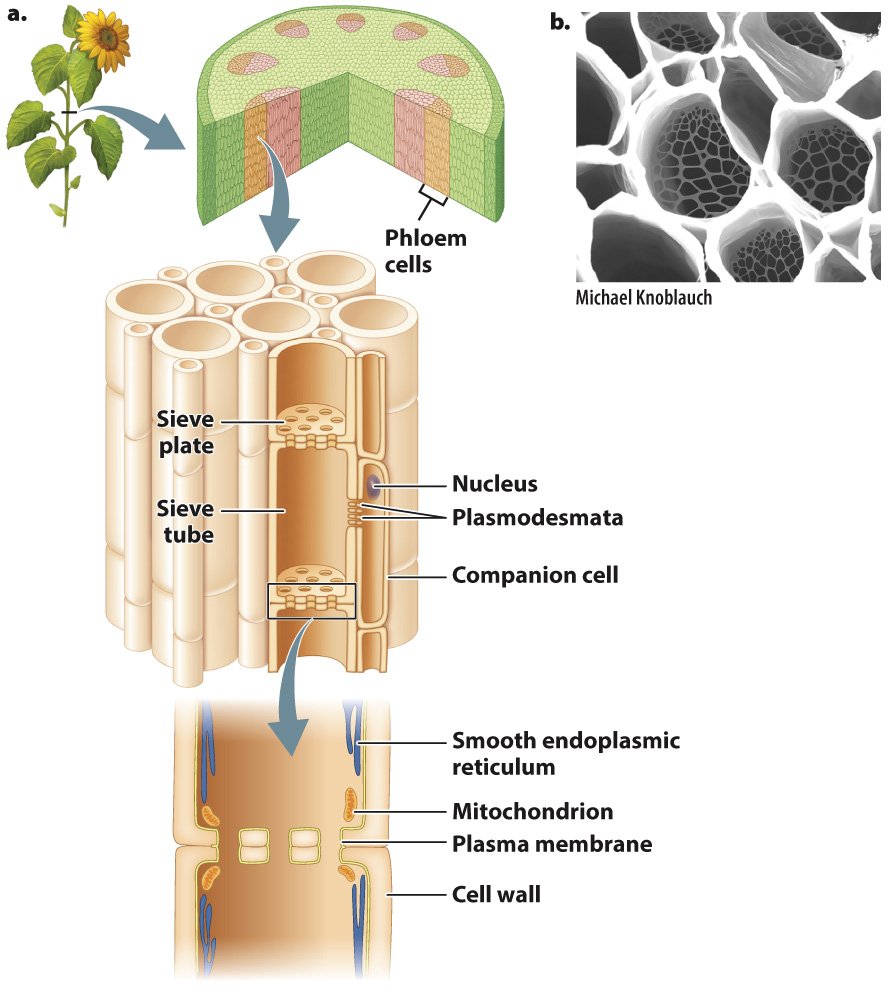Phloem transports carbohydrates from sources to sinks.
Whereas the direction of xylem transport is typically from the soil to the leaves, phloem moves carbohydrates from wherever they are synthesized or stored to wherever they are needed to support growth and respiration. In plants, regions that produce or store carbohydrates are referred to as sources. For example, leaves are sources because they produce carbohydrates by photosynthesis, and potato tubers (the part we eat) are sources because they store carbohydrates that can be supplied to the rest of the plant body when needed. Sinks are any portion of the plant that needs carbohydrates to fuel growth and respiration—
In contrast to the xylem, phloem transport takes place through living cells whose cytoplasm is rich in sugars, 10% to 30% by weight. For comparison, a can of regular Coke has a sugar content of approximately 10%. During development, the cells through which sugars will flow lose much of their intracellular structure, including the nucleus and the vacuole. At maturity, phloem transport cells retain an intact plasma membrane that encloses a modified cytoplasm containing only smooth endoplasmic reticulum and a small number of organelles, including mitochondria. Cellular functions such as protein synthesis are carried out by neighboring cells (called companion cells in angiosperms) to which the phloem transport cells are connected by numerous plasmodesmata.
Phloem transport cells are connected by pores, which allow sugars and other solutes to flow from one cell to another. Phloem sap refers to the soluble components of the cytoplasm that can pass through these pores. In angiosperms, sugar transport occurs though sieve tubes composed of cells that are connected by sieve plates, which are modified end walls with large pores (1–

Phloem transports carbohydrates as sucrose or larger sugars. Phloem also transports amino acids, inorganic forms of nitrogen, and ions including K+, which are present in much lower concentrations. Finally, phloem transports informational molecules such as hormones, protein signals, and even RNA. Thus, phloem forms a multicellular highway for the movement of raw materials and signaling molecules through the entire length of the plant.